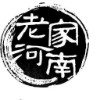
语言模式:文体学入门
¥ 5 2.0折 ¥ 24.9 九品
仅1件
河南郑州
认证卖家担保交易快速发货售后保障
作者Joanna Thornborrow
出版社外语教学与研究出版社
出版时间2000-10
版次1
装帧平装
货号12-A6
上书时间2024-11-07
- 最新上架
商品详情
- 品相描述:九品
图书标准信息
- 作者 Joanna Thornborrow
- 出版社 外语教学与研究出版社
- 出版时间 2000-10
- 版次 1
- ISBN 9787560019888
- 定价 24.90元
- 装帧 平装
- 开本 其他
- 纸张 胶版纸
- 页数 269页
- 【内容简介】
-
How can linguisties help you enjoy literature?
What do writers do with language?
This student-friendly textbook uses the principles of linguistic analysis to investigate the use of language in literary (and non-literary)texts. Patterns in Language communicates how linguistic knowledge can enhance and enrich the analysis of texts.
The authors borrow from traditional stylistics but focus primarily on the recuring linguistic patterns used by writers. Using a wide variety of imaginative and stimulating textual examples, the authors encompass both classic and contemporary lierature, drama and poetry (including James Joyce and Alice Walker. Shakespeare: Dennis Potter and Tom Stoppard; Emily Dickinson and Sylvia Plath)as well as popular fiction and adverts. User-friendly features include: Clear explanations of the phonetic, syntactie, semantic and discoursal properties of language. Numerous tasks, a checklist for analysis and suggestions for further reading in each chapter. An answer key and a glossary of terms.
Patterns in language assumes little or no prior knowledge of linguistic theory or literature.It is therefore ideal for students of English language, linguistics, and English literature, as well as for non-native speakers of English studying English as a foreign language. - 【作者简介】
- Joanna Thornborrow teaches English Languge and Linguistics at Roehampton Institute London. Shan Wareing, also at Roehampton Instiute, is Assistant Director of Educational Development.
- 【目录】
-
王宗炎序
导读
Acknowledgements
1 Introduction
1.1 About you……
1.2 What is stylistics?
1.3 Some debates about the methods and purpose of stylistics
1.4 The background to the study of language and literature
1.5 The purpose of this book
1.6 The structure of this book
2 Sound and metre in poetry
2.1 Introduction
2.2 Sound patterning
2.3 Stress and metrical patterning
2.4 Conventional forms of metre and sound
2.5 The poetic functions of sound and metre
2.6 Analysis of poetry:checklist Suggestions for further reading
3 Grammar and literary style
4 Meaning
5 Stylistic applications to drama
6 From classic realism to modernism
7 Style in popular texts
8 Theory and style:next steps
Suggested answers to activities
Glossary
References
Bibliography
Index
文库索引
点击展开
点击收起
— 没有更多了 —












以下为对购买帮助不大的评价